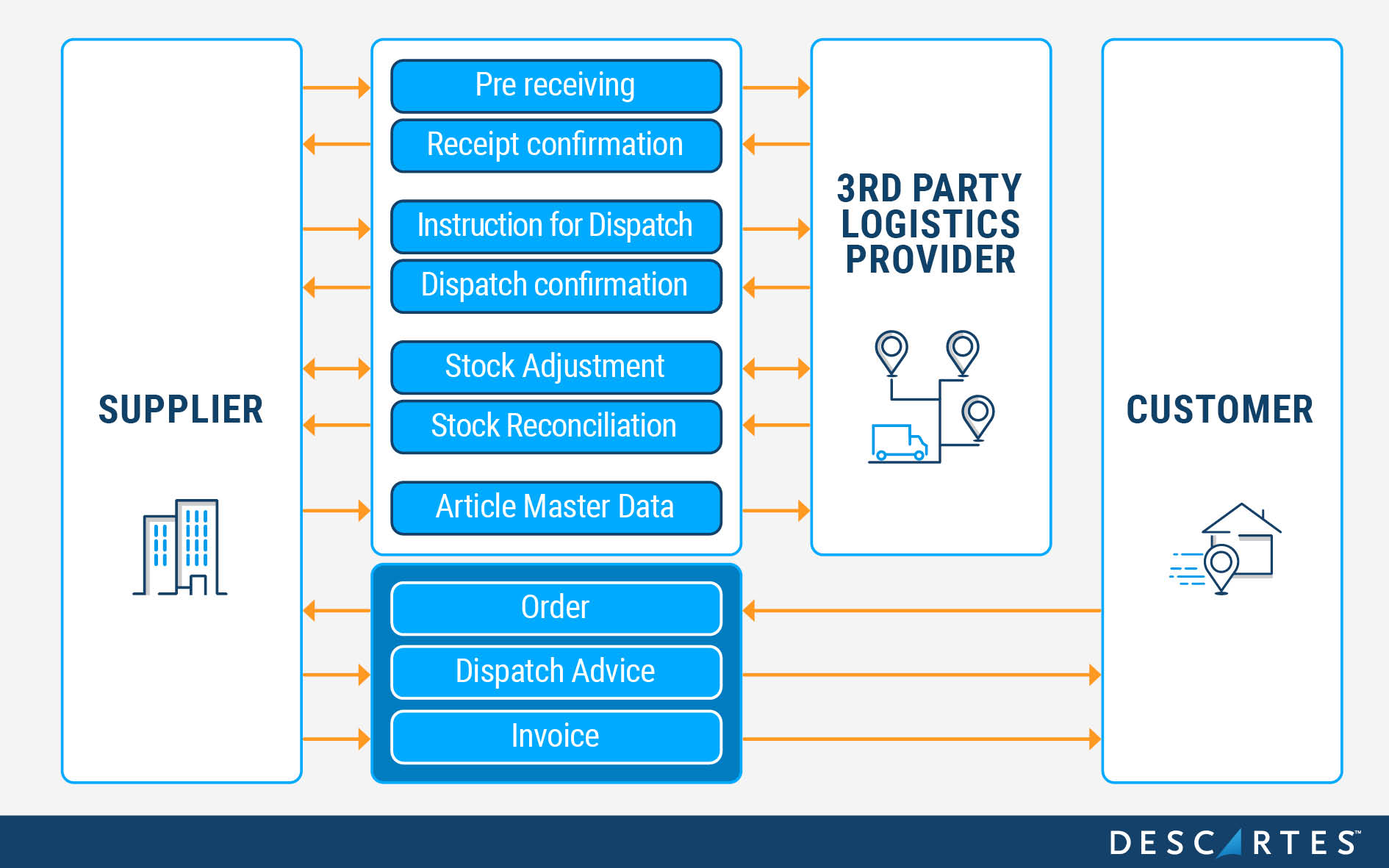EDI documents in 3PL
Electronic Data Interchange (EDI) is vital in the seamless exchange of information between third-party logistics (3PL*) providers, their clients, and other stakeholders. In the domain of 3PL, several logistics EDI documents are used to facilitate efficient operations and enhance supply chain visibility.
One of the most important aspects of 3PL is the integration of Enterprise Resource Planning (ERP) systems. This integration allows for smooth data flow between the 3PL provider and their clients, enabling real-time tracking, inventory management, and order fulfilment. Through ERP integration, 3PL providers can streamline processes, reduce errors, and improve overall customer satisfaction.
How EDI Transforms 3PL Operations

Adhering to logistics EDI standards is of great importance in 3PL. These standards ensure uniformity and compatibility across different systems, allowing for seamless communication and collaboration. By adhering to EDI standards, 3PL providers can avoid data discrepancies, reduce manual intervention, and enhance operational efficiency.

Essential logistics EDI documents commonly used in 3PL are:
Inbound management:
- Pre receiving / Warehouse Stock Transfer Shipment Advice: notifies the 3PL warehouse facility when the new batch of products is sent to their location.
- Receipt Confirmation / Warehouse Stock Transfer Receipt Advice: this message contains detailed information of the received goods in the warehouse.
Outbound management:
- Instruction for Dispatch / Warehouse Shipping Order: alerts the 3PL warehouse about the ordered goods to be picked and shipped to a buyer.
- Dispatch confirmation / Warehouse Shipping Advice: a confirmation message with all details of the picking/packing/shipment completion.
Inventory management:
- Stock Adjustments / Warehouse Inventory Adjustment Advice: adjustments made according to the inventory available. This message can be sent in both directions:
- Increase/decrease quantity levels due to damages, …
- Block/unblock goods due to quality inspection, …
- Stock Reconciliation / Inventory Advice: this message contains the stock levels in the warehouse.
Article master data:
- Product data: this message contains the master data of a (new) article.
Integrating EDI into 3PL operations is key to achieving optimal efficiency and accuracy. By automating processes such as order processing, shipment tracking, and invoicing through EDI, 3PL providers can reduce costs, minimize errors, and improve overall productivity.
Seamless integration of logistics EDI is essential for effective 3PL operations. It ensures real-time visibility, enables timely decision-making, and enhances collaboration between all stakeholders involved in the supply chain.

*3PL, or Third-Party Logistics
3PL, or Third-Party Logistics, refers to the outsourcing of logistics and supply chain management functions to a specialized company. These third-party providers typically offer services such as transportation, warehousing, inventory management, packaging, and freight forwarding.

Electronic Data Interchange FAQ
EDI insights and essential questions

EDI Buyer's Guide
Our EDI Buyer's Guide offers you a guideline to make the right informed choice
Are you ready to discuss 3PL EDI? Our experts are only a click away
Featured Content
Electronic Data Interchange (EDI) for third-party logistics (3PL)



